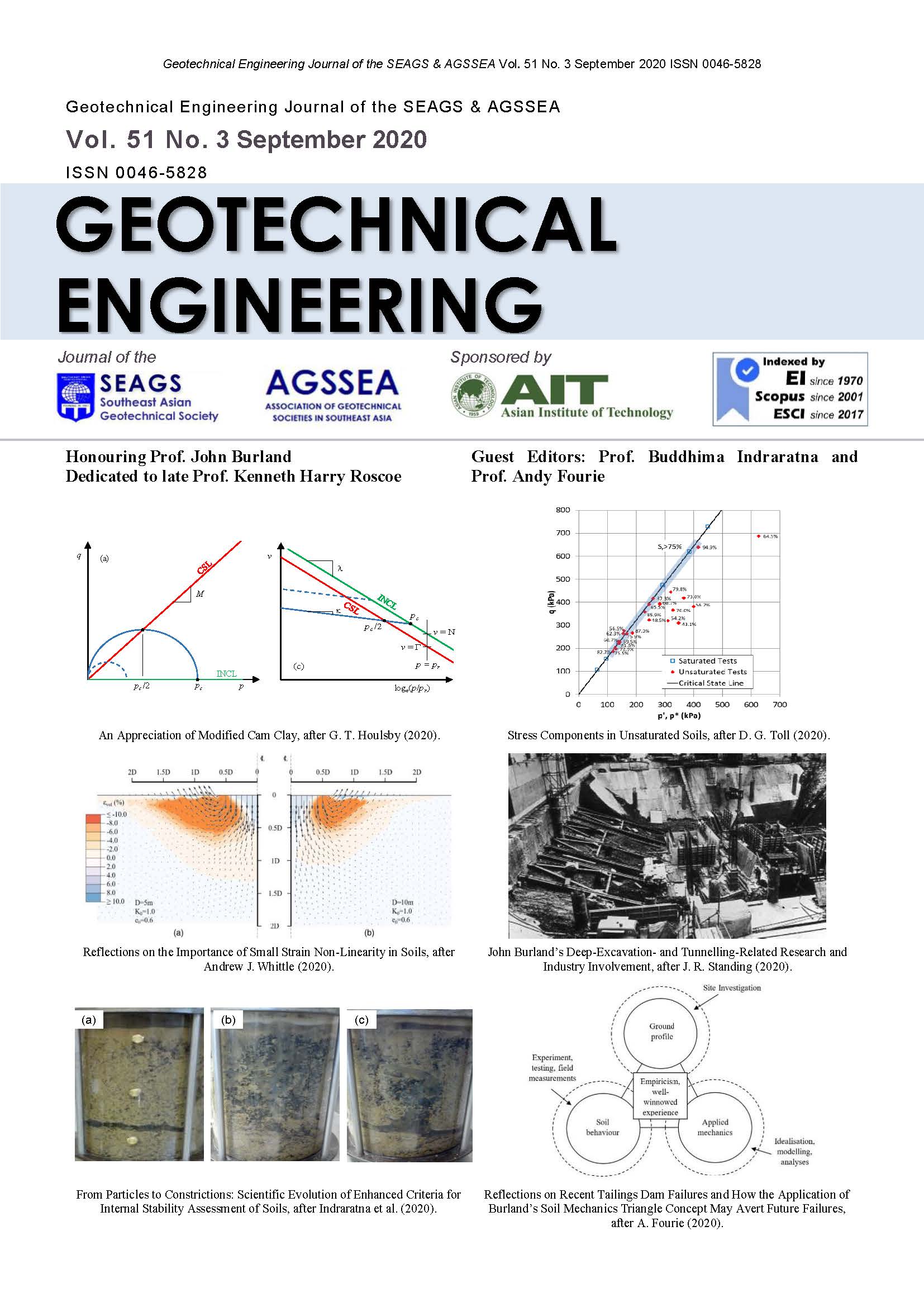Reflections on the Importance of Small Strain Non-Linearity in Soils
Main Article Content
Abstract
It is widely accepted today that most soils exhibit non-linear stress strain properties even at very small strain levels and that improved representation of these stiffness properties is needed to understand and interpret many practical problems involving soil-structure interactions. Much of this understanding relates to research carried out at Imperial College led by John Burland and his colleagues during the 1980’s. This work included the development of devices for routine measurements of local strains in laboratory element tests (Burland & Symes, 1982; Jardine et al. 1984), documentation of small strain stiffness properties for a range of reconstituted and natural soils (Jardine et al. 1984), and representation of these nonlinear stiffness properties in finite element simulations involving a range of soil-structure interactions (Jardine et al. 1986). This information was then synthesized in Burland’s seminal Bjerrum Lecture ‘Small is beautiful’ (Burland, 1989) and linked to the performance of foundations, excavations and tunnels. This paper reviews the importance of small strain non-linearity from the perspectives of i) advancing knowledge of soil behavior, ii) development of more reliable constitutive models, and iii) evaluating impacts in the computed performance for practical geotechnical problems.
Article Details

This work is licensed under a Creative Commons Attribution-NonCommercial-NoDerivatives 4.0 International License.
Copyright © 2019 Association of Geotechnical Societies in Southeast Asia (AGSSEA) - Southeast Asian Geotechnical Society (SEAGS).


